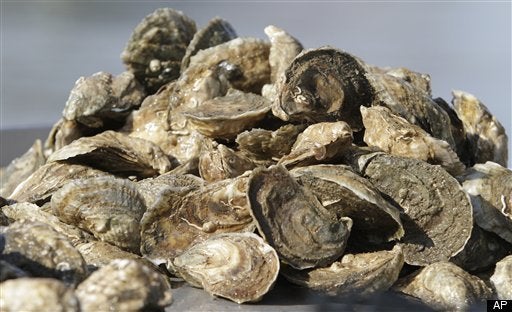
Oysters aren't disappearing from the dining table anytime soon, but they may be disappearing from our oceans.
A recent study published in BioScience has shown that the mollusks, declared "functionally extinct," are disappearing quickly as 85 percent of their reefs have been destroyed through disease or over-harvesting, according to the AFP. 75 percent of the remaining wild oysters can be found in 5 locations in North America.
So what does "functionally extinct" mean?
Oysters no longer play almost any significant role in their ecosystems.
From the AFP:
"Oyster reefs are at less than 10 percent of their prior abundance in most bays (70 percent) and ecoregions (63 percent)," said the study.
"They are functionally extinct -- in that they lack any significant ecosystem role and remain at less than one percent of prior abundances in many bays (37 percent) and ecoregions (28 percent) -- particularly in North America, Australia and Europe."
While the study didn't include parts of South Africa, China, Japan, North Korea, and South Korea, other studies suggest that there's been a significant decrease in oysters in these regions as well, according to the authors.
However, according to the AFP, native oyster catches are highest in the Gulf of Mexico. The world's 5 top sites for oyster catches were in North America.